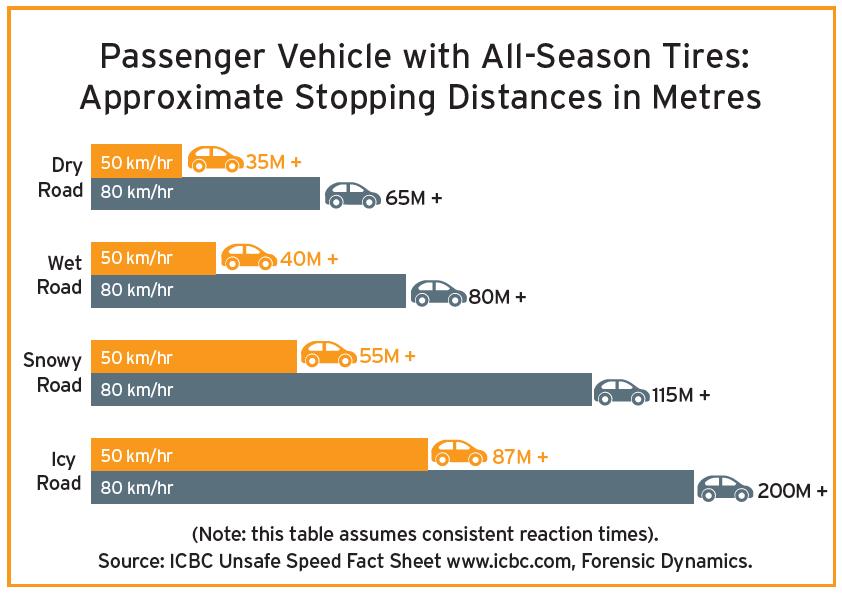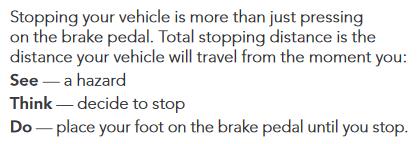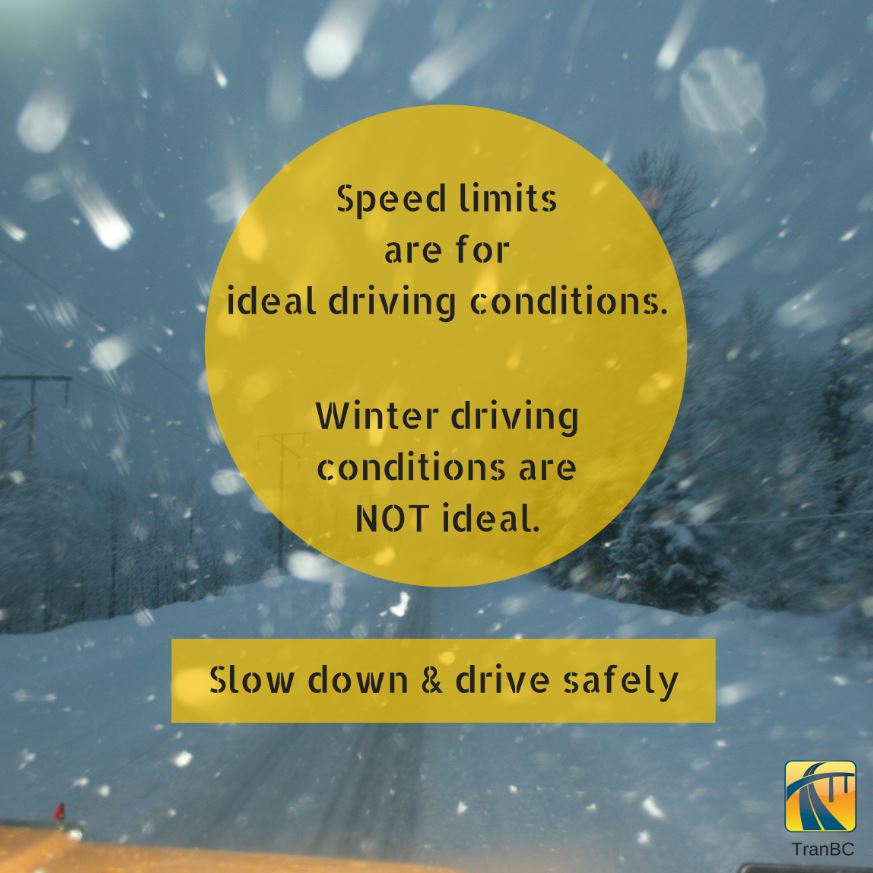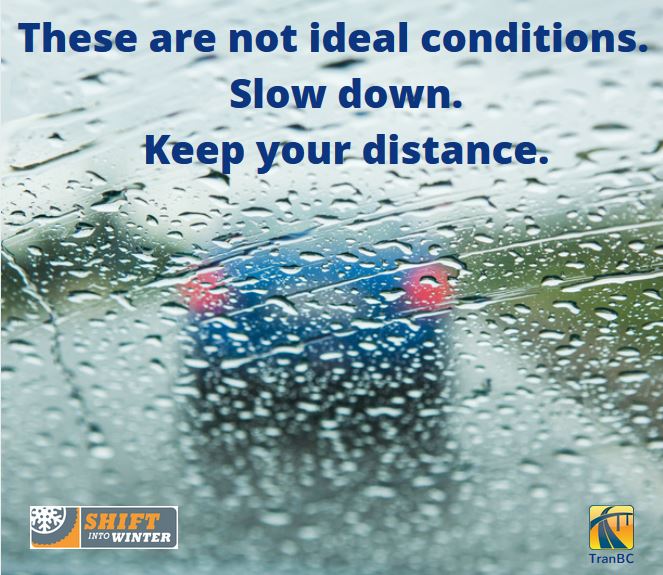
It’s pretty simple, really. Stopping distance is the distance it takes your vehicle to come to a complete stop once you apply your brakes. The faster you are travelling, the longer it will take you to come to a complete stop (and being able to stop your vehicle as quickly as possible when you need to is always a good thing).
“Speed limits are for ideal driving conditions. Winter driving conditions are not ideal.
Slow down and drive safely!”
We— along with our partners in the Winter Driving Safety Alliance — repeat this mantra many, many times during the winter months. Why? To remind drivers that the road they drove on during the summer is not the same road during winter. Rain, slush, snow, ice and cold temperatures mean your tires have less traction and less traction makes stopping harder. Period.
For example, if you’re driving on a set of all-season tires on a rain-covered road at 80 km/h, you’ll need nearly twice the distance to stop than you would when driving at 50 km/h. Not surprisingly, snow and ice covered roads create even longer stopping distances.
More than just pressing on the brake pedal
You need time to see and react before your brakes take effect and slow you down. When you see a hazard ahead while driving, it will take you about three-quarters of a second to make the decision to stop and another three-quarters of a second to brake. Only then will your vehicle begin to slow.


Double the Speed, Quadruple the Braking Distance
When increasing your speed, keep this in mind: Each time you double your speed, your braking distance is multiplied by four. In wet or icy road conditions, it’s even more.
Help keep yourself and others safe by slowing down, keeping your distance, and remembering these tips:
- Know the risk posed by winter driving (including darkness, rain). Slow down on wet roads, in bad weather conditions, or on uneven roads.
- Increase your following distance if you are following behind a very large vehicle that could block your vision or a motorcycle that could stop very quickly.
- Prepare yourself and your vehicle. Have an emergency kit on hand, make sure your car is running well and is equipped with winter tires.
- Be realistic about your travel time. Driving is a complex task, especially in poor conditions. Allow extra travel time in wet, icy or snowy weather so you aren’t tempted to rush. If you’re going to be later than you expected — deal with it. Take a deep breath and accept the delay.
- Assess the need for travel. Check DriveBC and if conditions don’t look good – don’t go.

I think all new drivers, before being able to remove the “L” should have to take a provincial defensive driving course – preferably in-person. I learned a lot from the course I had the opportunity to be part of – approx 50 years ago.
Hi Helen, thanks for your comment. We encourage you to also share this comment with ICBC, who are responsible for driver training. Safe travels!
All new drivers should get their Drivers license after learning to drive in the winter when conditions
are dangerous with Ice and Snow.
The Driving Schools often teach during the dry Months and many People have never seen Snow before.
Thanks for your comment, Max!
Thanks for sharing this information. Very helpful.
Glad to know you found it useful.
Hello,
The ambient temperatures are not given, which is critical for dry and wet road conditions. There will be a significant difference in stopping distance for All-Season tires at different temperatures starting below 7 degress C as the rubber compound hardens in the cold.
How about showing stopping distances for all-season tires with 3.5 mm tread v.s. real winter tires with say 7 mm tread?
Hello Nick,
We strongly recommend that drivers who travel in winter conditions install winter rated mountain snowflake tires for the winter season. Allowing tires with the M+S logo is a nod to the millions of British Columbians who live in the Lower Mainland and Southern Vancouver Island, who never travel outside of these areas. In this more temperate climate (wet, sometimes slushy), M+S tires can actually perform bett better. And the minimum tread depth is just that – the absolute minimum legal depth allowable on BC highways. The better the tread depth, the better the performance of the tire on the road – regardless of tire type. Thanks for your comment!